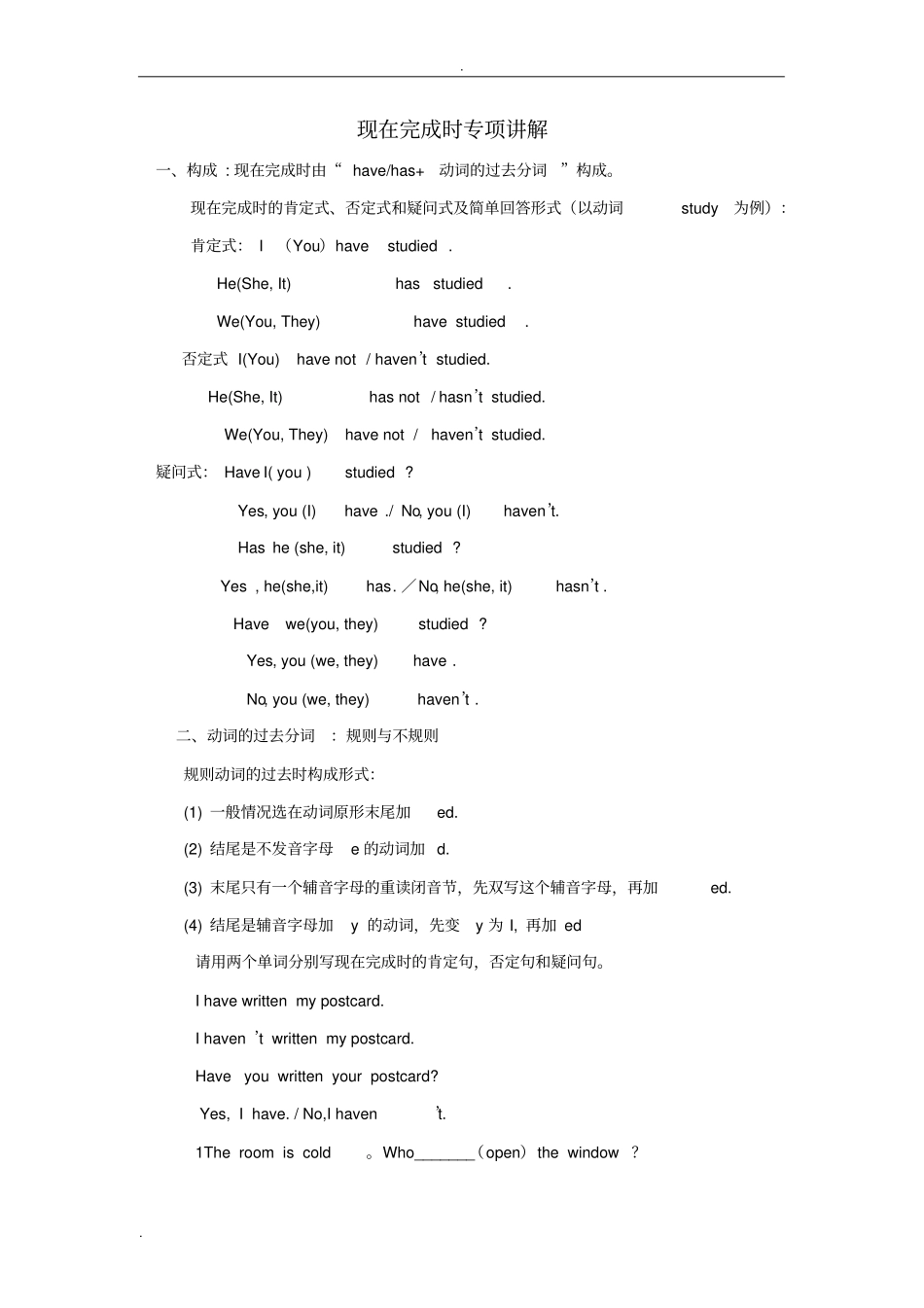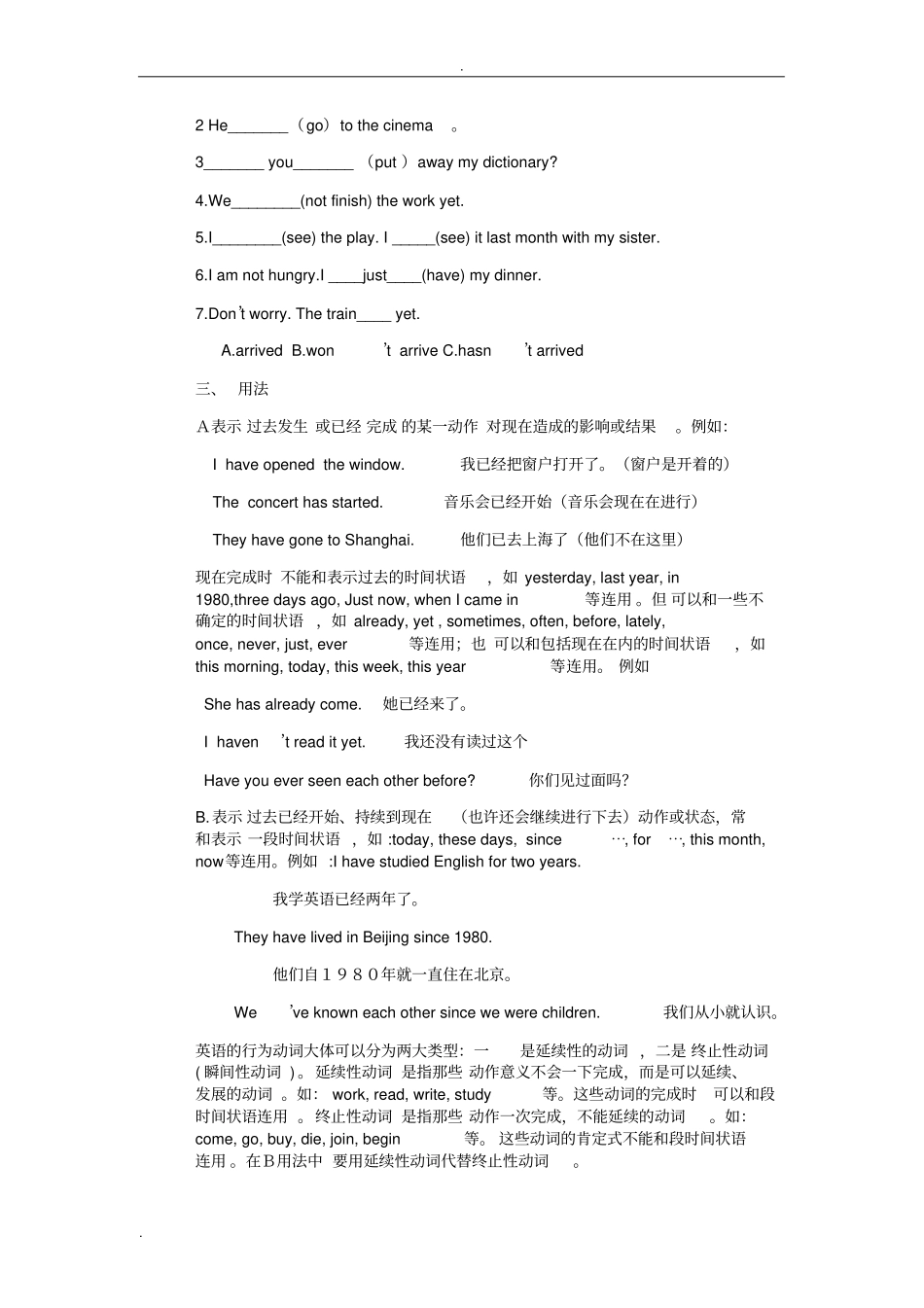. . 现在完成时专项讲解一、构成 : 现在完成时由“ have/has+ 动词的过去分词”构成。现在完成时的肯定式、否定式和疑问式及简单回答形式(以动词study为例):肯定式: I (You)have studied . He(She, It) has studied. We(You, They) have studied. 否定式 I(You) have not / haven’t studied. He(She, It)has not / hasn’t studied. We(You, They) have not / haven’t studied. 疑问式: Have I( you ) studied ? Yes, you (I) have ./ No, you (I) haven’t.Has he (she, it) studied ? Yes , he(she,it) has. /No, he(she, it) hasn’t . Have we(you, they) studied ? Yes, you (we, they) have . No, you (we, they) haven’t . 二、动词的过去分词:规则与不规则规则动词的过去时构成形式:(1) 一般情况选在动词原形末尾加ed. (2) 结尾是不发音字母e 的动词加 d. (3) 末尾只有一个辅音字母的重读闭音节,先双写这个辅音字母,再加ed. (4) 结尾是辅音字母加y 的动词,先变y 为 I, 再加 ed 请用两个单词分别写现在完成时的肯定句,否定句和疑问句。I have written my postcard. I haven ’t written my postcard. Have you written your postcard? Yes, I have. / No,I haven’t. 1The room is cold。Who_______(open)the window ?. . 2 He_______(go)to the cinema。3_______ you_______ (put )away my dictionary? 4.We________(not finish) the work yet. 5.I________(see) the play. I _____(see) it last month with my sister. 6.I am not hungry.I ____just____(have) my dinner. 7.Don’t worry. The train____ yet. A.arrived B.won’t arrive C.hasn’t arrived 三、 用法A表示 过去发生 或已经 完成 的某一动作 对现在造成的影响或结果。例如: I have opened the window.我已经把窗户打开了。(窗户是开着的) The concert has started.音乐会已经开始(音乐会现在在进行) They have gone to Shanghai.他们已去上海了(他们不在这里)现在完成时 不能和表示过去的时间状语,如 yesterday, last year, in 1980,three days ago, Just now, when I came in等连用 。但 可以和一些不确定的时间...


